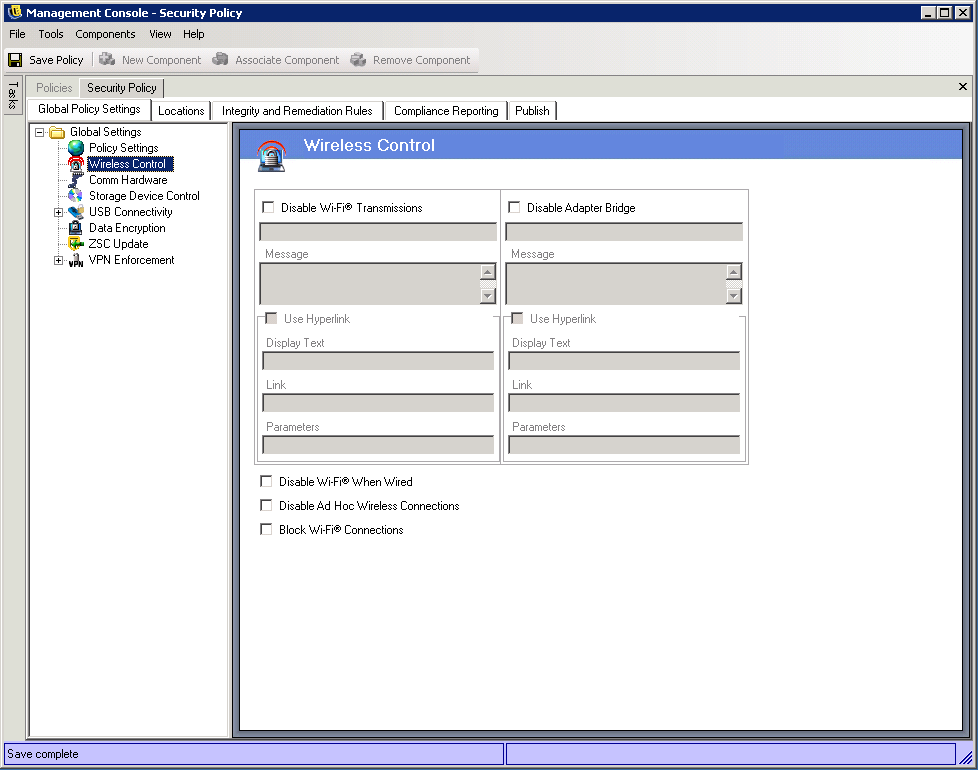10.3 Wireless Control
The Wireless Control settings determine the type of wireless functionality available. You can control such settings as whether or not wireless is enabled, whether or not it is enabled when a wired connection is available, and whether or not ad hoc wireless connections are allowed.
-
Make sure the policy you want to configure is open in the Management Console (see Section 10.1, Accessing the Global Settings).
-
On the tab, click .

-
Configure the settings as desired:
-
Disable Wi-Fi Transmissions: This setting globally disables all Wi-Fi adapters, up to and including complete silencing of a built-in Wi-Fi radio.
Wi-Fi transmissions are disabled without user notification. If you want to notify the user, you can choose to display a custom user message and hyperlink to the user if he or she attempts to activate a Wi-Fi connection.
-
Disable Adapter Bridge: This setting globally disables the networking bridge functionality included with Windows XP, which allows the user to bridge multiple adapters and act as a hub on the network.
Adapter bridging is disabled without user notification. If you want to notify the user, you can choose to display a custom user message and hyperlink to the user if he or she attempts to activate an adapter bridge.
You can choose to display a custom user message and hyperlink when the user attempts a Wi-Fi connection.
-
Disable Wi-Fi When Wired: This setting globally disables all Wi-Fi Adapters when the user has a wired (LAN through the NIC) connection.
-
Disable AdHoc Networks: This setting globally disables all AdHoc connectivity, enforcing Wi-Fi connectivity via an access point and restricting all peer-to-peer networking.
-
Block Wi-Fi Connections: This setting globally blocks Wi-Fi connections without silencing the Wi-Fi radio. Use this setting when you want to disable Wi-Fi connection, but want to use access points for location detection. See Section 11.0, Configuring a Policy’s Locations for more information.
-
-
Click to save your changes.